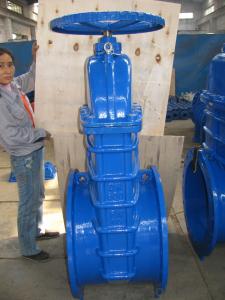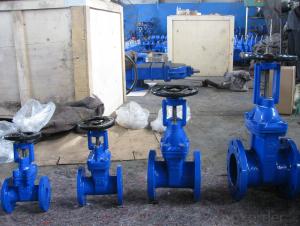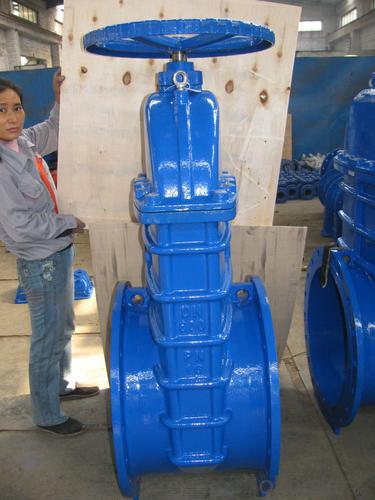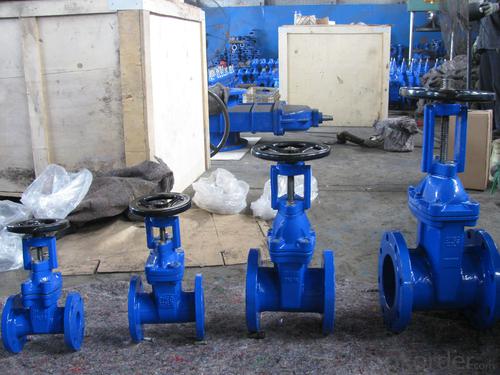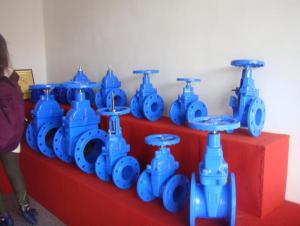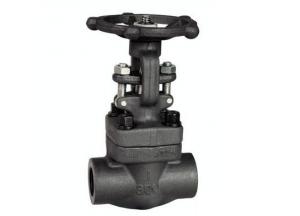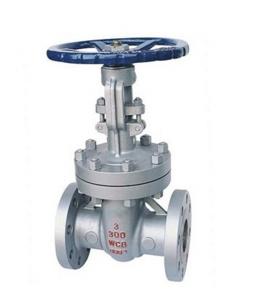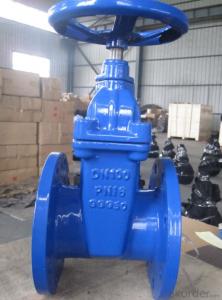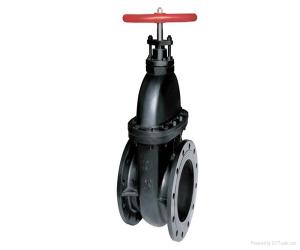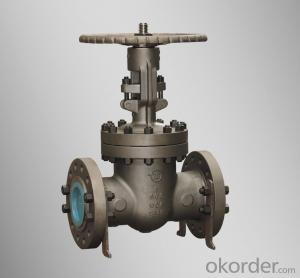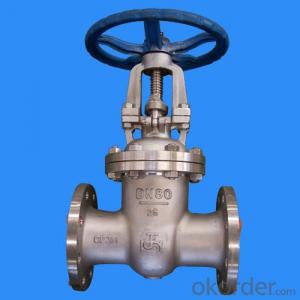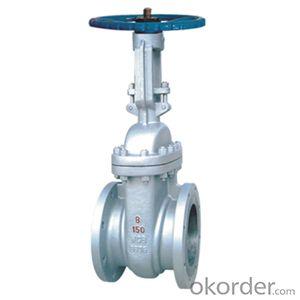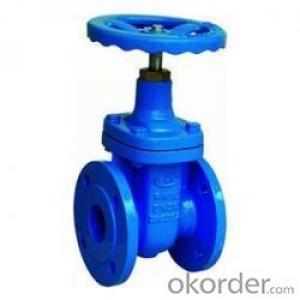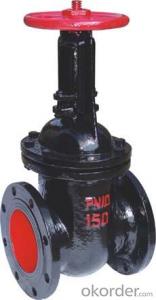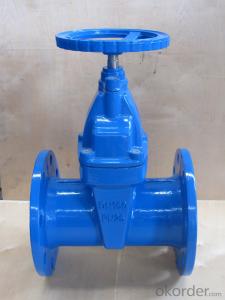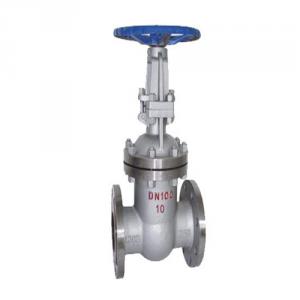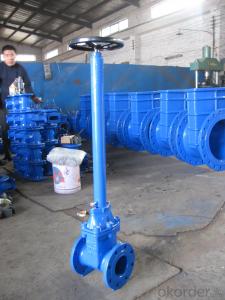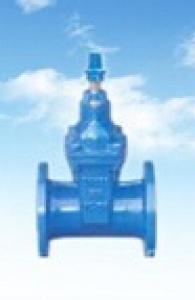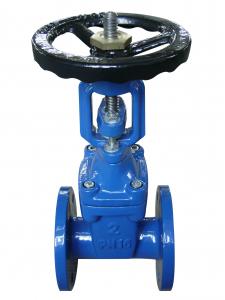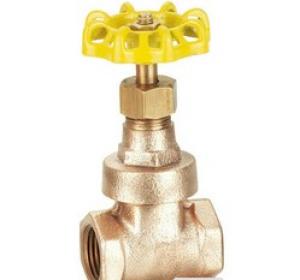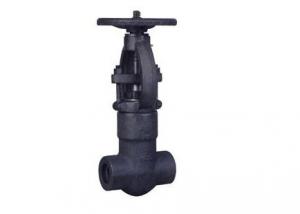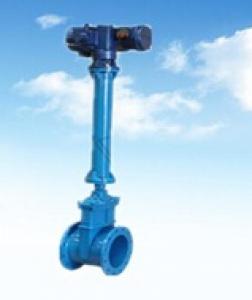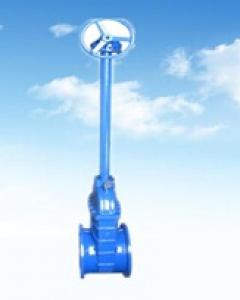Cast Iron Gate Valve DIN 2014
- Loading Port:
- China main port
- Payment Terms:
- TT OR LC
- Min Order Qty:
- 100 PCS
- Supply Capability:
- 1000 PCS/month
OKorder Service Pledge
OKorder Financial Service
You Might Also Like
1.Structure of Gate Valve Description:
A gate valve, also known as a sluice valve, is a valve that opens by lifting a round or rectangular gate/wedge out of the path of the fluid. The distinct feature of a gate valve is the sealing surfaces between the gate and seats are planar, so gate valves are often used when a straight-line flow of fluid and minimum restriction is desired. The gate faces can form a wedge shape or they can be parallel. Gate valves are primarily used to permit or prevent the flow of liquids, but typical gate valves shouldn't be used for regulating flow, unless they are specifically designed for that purpose. Because of their ability to cut through liquids, gate valves are often used in the petroleum industry. For extremely thick fluids, a specialty valve often known as a knife valve is used to cut through the liquid. On opening the gate valve, the flow path is enlarged in a highly nonlinear manner with respect to percent of opening. This means that flow rate does not change evenly with stem travel. Also, a partially open gate disk tends to vibrate from the fluid flow. Most of the flow change occurs near shutoff with a relatively high fluid velocity causing disk and seat wear and eventual leakage if used to regulate flow. Typical gate valves are designed to be fully opened or closed.When fully open, the typical gate valve has no obstruction in the flow path, resulting in very low friction loss.
2. Main Features of the Gate Valve:
• Valve body cavity using non-toxic epoxy resin,both inside and outside flashboard completely is coated with rubber
• Free of water pollution
• High manufacturing accuracy
• High strength
• Environmental protection and energy saving
• Good visual effect
3. Images
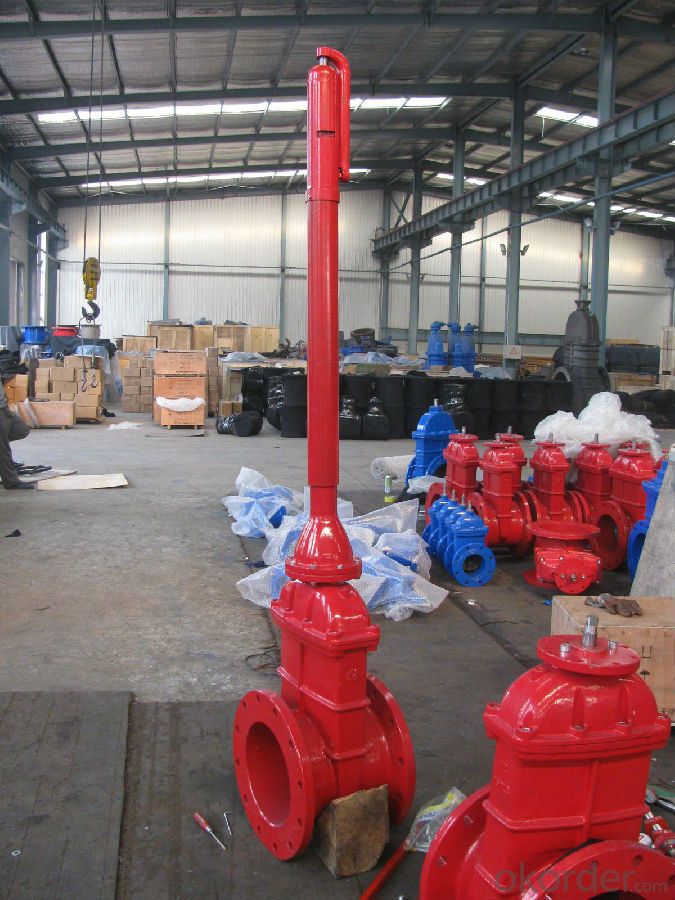
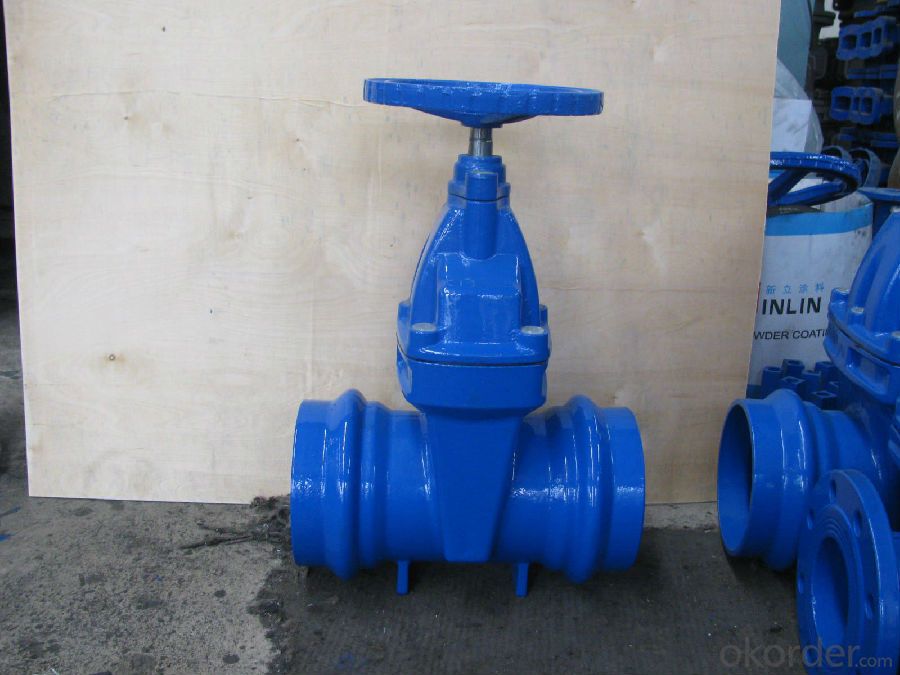
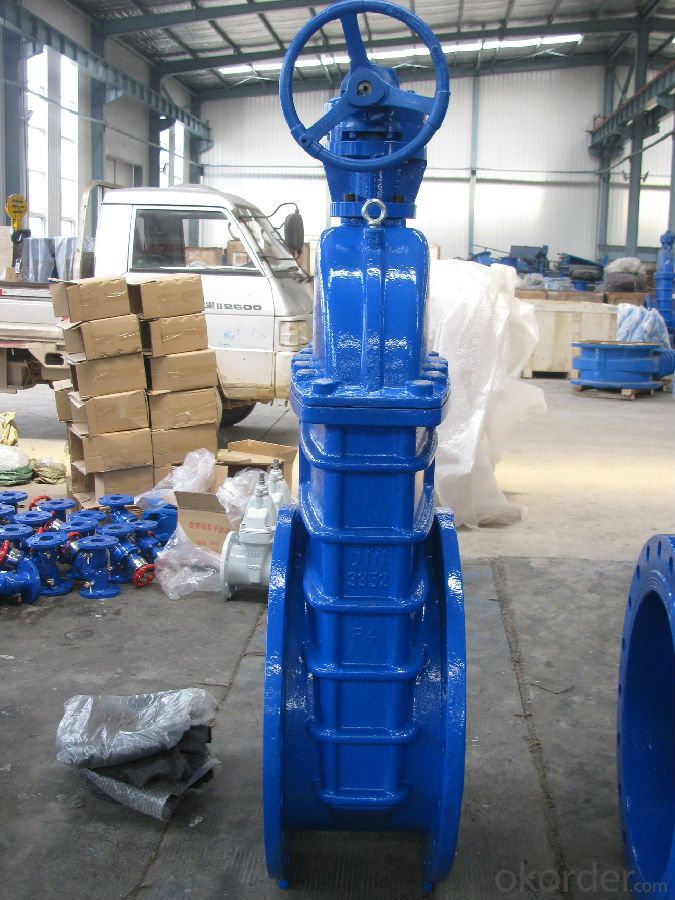
4. Gate valve Specification
Gate valve
Ductile iron gate valve
Flange Gate valve
Our company can produce all kinds of valves, If you have any inquiry, please contact us, we will offer you our best price.
1,good quality and competitive prices |
2,WRAS,CE,ISO 9001 approved. |
3,AKZO epoxy coating available |
Flanged ends according to BS,DIN,MSS,ANSI JIS |
Designed according BS,DIN,MSS,ANSI JIS |
Ductile Iron or Cast Iron body, bonnet and handwheel |
Cast iron wedge, NBR/EPDM coated |
Stainless steel stem, epoxy coating |
Test: BS,DIN,MSS,ANSI JIS |
5.FAQ
1. What's are the characteristics of gate valve?
The distinct feature of a gate valve is the sealing surfaces between the gate and seats are planar, so gate valves are often used when a straight-line flow of fluid and minimum restriction is desired. The gate faces can form a wedge shape or they can be parallel.
2. What is the work principle of gate valve ?
The gate faces can form a wedge shape or they can be parallel. Gate valves are primarily used to permit or prevent the flow of liquids, but typical gate valves shouldn't be used for regulating flow, unless they are specifically designed for that purpose. Because of their ability to cut through liquids, gate valves are often used in the petroleum industry.
3. What is the structure?
Bonnets provide leakproof closure for the valve body. Gate valves may have a screw-in, union, or bolted bonnet. Screw-in bonnet is the simplest, offering a durable, pressure-tight seal. Union bonnet is suitable for applications requiring frequent inspection and cleaning. It also gives the body added strength. Bolted bonnet is used for larger valves and higher pressure applications.
- Q: Gate valve DN65 what does that mean?
- DN65 indicates that the valve bore is 65CM.The gate (gate valve) is a headstock ram, RAM direction of motion perpendicular to the direction of the fluid, valve can only be fully open and fully closed doors, discomfort pumpsparameters vary, usually 5 degrees is not high, medium temperature is 2 degrees 52'. To improve its manufacturability, make up for the deviation of the angle of the sealing surface during processing. This gate is called an elastic ram.
- Q: What is the standard for ductile iron gate valve set?
- Fujian - mark light - valve for you to answer:Whether it is the next shot or dark bar, directly flanged valves can be installed, usually apply eighth copies, if the industrial pipeline is apply sixth copies, sixth copies to apply separate sets of flanges and bolts (bolts independent fee).
- Q: What is the difference between cut-off valve and gate valve?
- Simply put, the cut-off valve is one-way, only into, do not give up, the valve is two-way
- Q: What does the gate valve 150# mean? Is it stress PN? What's that, PN16 or?It's better to have some specific links, thanks!
- It's the stress PN, the 2.0MPA150# is the ANSI standard -- American National Standards InstitutePN is nominal pressure
- Q: Does the tap belong to a stop valve or a gate valve?
- If it is about to pull open and close, it is cock valveIf it is rotated up and down, it is a stop valve
- Q: Internal screw current limiting gate valve (Tan Gang) PN5.0 DN15/ Phi 1 Rc1/2 what does that mean?
- We did thatInternal thread current limiting gate valve (Tan Gang)Body material: carbon steelPressure rating: PN5.0 = 300LB American StandardNominal = DN15 = 1/2"Phi 1 = in the middle of the gate drilling a Phi 1 hole, so that in closing there will be a certain flow, that is, the minimum flow, that is, the current limit.Rc1/2 is thread, which is the connection
- Q: What is the difference between gate valve and gate valve? Is it the same valve?
- Gate valve and gate valve are 2 kinds of valves, do not feel like a long name is the same kind, please look at Baidu maps introduced manufacturers.
- Q: What is plug welding gate valve?
- Socket welding valve valve cover design in three forms. The first is forging steel bolt type valve cover, according to this design form design of the valve, the valve body and the valve cover bolt nut connection, spiral wound gasket 316 clamp flexible graphite manufacturing: seal. Customers have special requirements can be used when the metal ring connection. Second design form is the welded bonnet, according to this design form of the valve, the valve body and the valve cover with a threaded connection, welded seal. Customers have special requirements can be used when the third is connected through welding. Self sealing valve cover, according to this design form design of the valve, the valve body and valve cover with a threaded connection, pressure from the dense ring seal.The editing characteristics of 1 valve design and manufacture in accordance with API602 and ASME B16.34. tested according to API 598, marked by MSS-SP-25.2. full diameter or diameter shrinkage 3 rod bracket type 4 self centering sleeve type 5 pressure plate bolt connection, spiral wound gasket seal type valve cover nut connection, welded seal type valve cover and screw connect the internal pressure self tightening type valve cover 6 integral sealing seat 7 socket end with ASME B16.118. threaded end (NPT) with ANSI/ASME B1.20.19. valve can be transformed into the throttle type, needle type, ball type and type check
- Q: Acid resistant alkali valve gate valve
- D is small in shape and beautiful in appearance.E operation is simple and labor-saving.
- Q: What is the difference between a flanged gate valve and a wire gate valve?
- Threaded valve is via the wire or wire is connected with the pipeline, a small general air for the air valve, all belong to this
Send your message to us
Cast Iron Gate Valve DIN 2014
- Loading Port:
- China main port
- Payment Terms:
- TT OR LC
- Min Order Qty:
- 100 PCS
- Supply Capability:
- 1000 PCS/month
OKorder Service Pledge
OKorder Financial Service
Similar products
Hot products
Hot Searches
Related keywords
